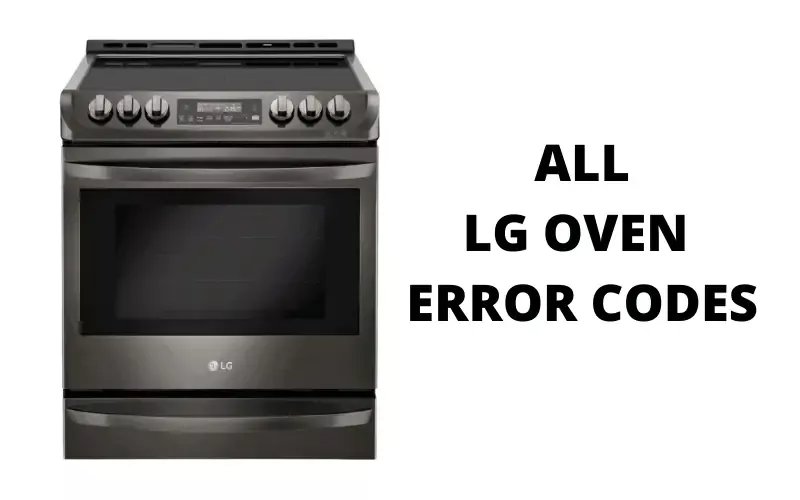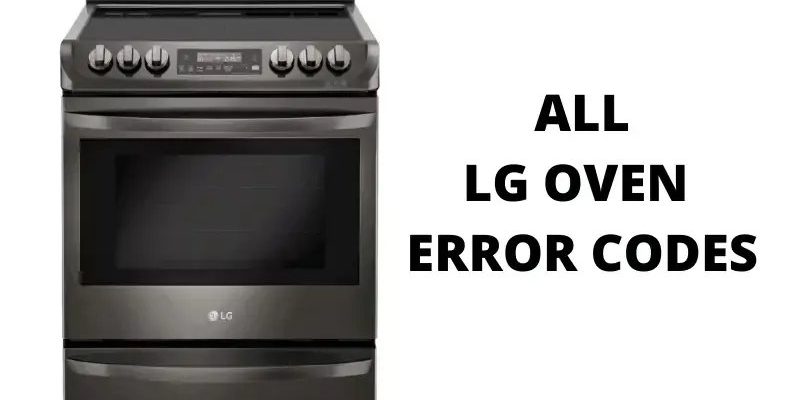
The LE error code is a signal that something is amiss, and it usually involves the motor—a crucial component of your appliance. When this code appears, it means the appliance is detecting an overload in the motor, akin to a car engine struggling to chug along with too much weight in the back. While it might seem intimidating at first, understanding what’s happening can empower you to take the right steps towards a resolution. Let’s delve into the possible reasons behind the LE error and what you can do about it.
Understanding the Motor Overload
You might be wondering, “What does the motor have to do with my cooking?” Great question! In LG ovens and ranges, the motor plays a key role in ensuring your appliance runs smoothly. Think of it as the heartbeat of your appliance, keeping everything functioning in harmony. However, like any overworked heart, it can sometimes struggle when overwhelmed.
One common scenario is overheating. Imagine running in a hot climate without a drink—you’d slow down or stop to cool off. Similarly, if your oven’s motor overheats, you may see the LE code pop up. This can be caused by blockages, whether it’s residue in the fan or vent restricting airflow. Ensuring that the vents and fans are clear of debris can do wonders for preventing overheating.
Moreover, electronic glitches can also trip up your motor’s rhythm. Just like a computer might freeze with too many tabs open, your oven’s electronic controls might falter if there’s a power surge or a minor fault in the software. Resetting your oven, much like rebooting a computer, can sometimes clear up these errors. Turning it off, waiting a few minutes, and turning it back on might just do the trick.
Addressing Mechanical Blockages
What if the motor isn’t overheating but rather something’s blocking it? Imagine trying to pedal a bike with a stick stuck in the wheels—that’s what your motor deals with when there’s a blockage. Foreign objects or even accumulated grime can cause the motor strain, triggering that pesky LE error code.
First things first, ensure that there’s nothing physically obstructing the motor. For instance, clear any fallen objects or debris from the stove area. Just as you wouldn’t want a rock in your shoe while hiking, your oven doesn’t want foreign items jamming its movement. Once clear, see if the error code persists.
If mechanical blockages aren’t the issue, you might need a closer look at the motor components. Sometimes, parts wear out, much like old shoes lose their soles over time. Inspecting these components—preferably with professional help—can reveal if replacements are needed. Regular maintenance checks can prevent these issues, much like a tune-up keeps a car running smoothly.
Power Supply Issues
Let’s talk about power—the life force of your appliances. An unstable power supply can wreak havoc on your oven, much like how flickering lights signal an electrical hiccup at home. Power fluctuations can lead to the LE code appearing, as your motor struggles to maintain its regular cycle without a consistent flow of electricity.
Ensuring your oven is connected to a proper power source is crucial. Faulty or loose wiring can cause interruptions, akin to a headset with a dodgy connection making your music cut in and out. So, check your connections and, if necessary, consider having an electrician take a thorough look to ensure everything’s secure and steady.
Investing in a surge protector could also be wise. This small device can act as a safety net, guarding your appliances against power spikes that might otherwise trip up your oven’s performance. It’s like putting on a raincoat before heading into a storm—you’re simply better prepared.
Next Steps and Preventative Measures
Alright, so what can you do next? If you’ve tried troubleshooting on your own to no avail, calling an authorized service provider is a smart move. They have the expertise to diagnose and resolve issues without you having to play detective and potentially void any warranties in the process. Remember, just like you’d call a plumber for persistent leaks, appliance specialists exist for these moments.
For prevention, routine maintenance can make a world of difference. Regularly inspecting and cleaning your oven can prevent many issues from cropping up. It’s like brushing your teeth to avoid cavities—simple upkeep can save you a lot of hassle down the line.
Finally, be gentle with your gadget. Avoid opening the door too frequently during cooking, as this can strain the motor by disrupting its cycle. Treat it with care, and it will serve you well for years to come.
In conclusion, the LE error, while daunting at first, is simply your oven’s way of asking for a little TLC. By understanding the core issues it points to, you can effectively tackle the problem, ensuring your beloved appliance remains your culinary companion for many meals to come.
